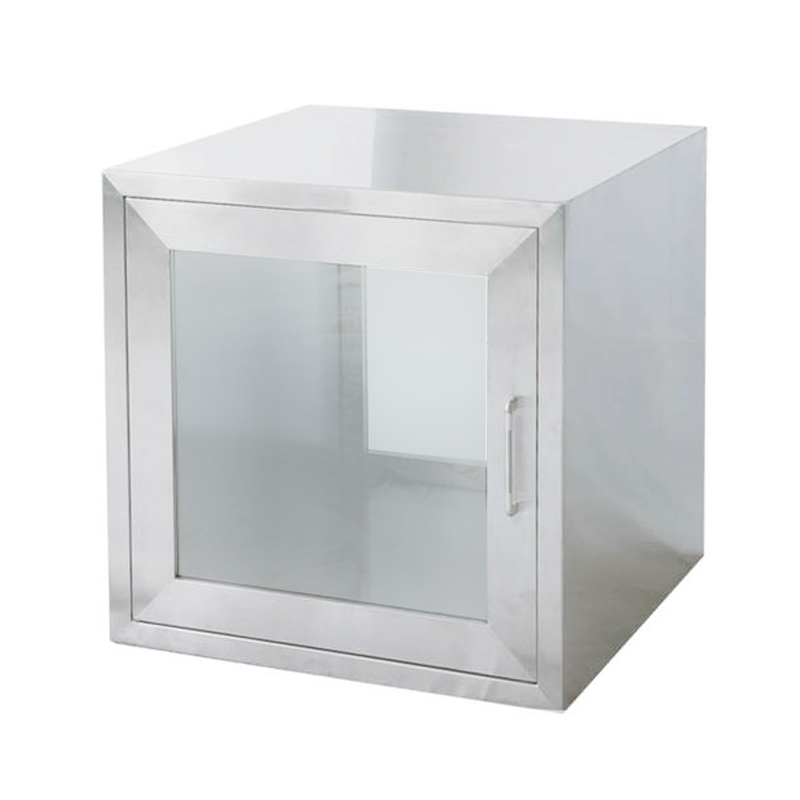

Pass-through boxes are used to transfer materials from […]
Pass-through boxes are used to transfer materials from one cleanroom space to another cleanroom space. They provide a safe transfer method between spaces that are not occupied by personnel and greatly reduce contamination risk.
Various types of pass-through boxes are available. These vary in size, type of ventilation and level of sanitizing. Some boxes are airtight and utilize recirculating internal fans and HEPA supply filters that reduce particulate concentration. Others are passive and depend on internal mixing and airflow patterns to provide sufficient air transfer for the enclosure.
A pass-through is an integral component of an entire cleanroom system. It can be installed between a cleanroom and an adjoining room to bridge unclassified or controlled spaces with low risks . The most common uses of pass-throughs in life science environments are the passage of raw materials into EU Grade B from a Class C space, trash transfer into a Class D space, and small equipment transfers in continuous manufacturing.
The direction of travel through a pass-through is also important. Since the transfer of particles from a less clean space into a clean space produces less contamination risk than the reverse, it is important to assess particle diffusion through the box when designing a recirculating box.

Interlocks are critical to the operation of a pass-through. They allow a door to be opened only after a timer has elapsed and prevent contaminant ingress during the time between cycles. These systems can be a simple mechanical or electronic interlock, or an automated door to coordinate with automated material transfer.
An interlock can be controlled by a switch or relay, or by an electric control panel with a timed cycle of openings and closures. The control panel can also be programmed to activate an automatic sanitizing agent.
A sanitizing system that consists of a chemical spray, vapor, or gas is installed within the pass-through to dilute airborne contaminants. This can reduce surface contamination and elevate the pass-through to the level of an autoclave or sanitizing chamber.
Germicidal and antibacterial ultraviolet light is installed in some pass-throughs to enhance sanitizing capabilities. These UV lights are capable of destroying DNA pathogens, and can be easily installed into a pass-through to ensure a high degree of protection.
Regardless of the type of pass-through, it is crucial to choose a product that will provide maximum safety and protect against cross contamination. It should be lightweight and easy to clean, and should sit flush to the wall so that dust buildup can be avoided. Lastly, it should be manufactured with a high-quality and durable material that is resistant to bending and long-lasting performance.
Our new models offer superb design;competitive prices and their new features give them distinct advantages over similar products from other manufacturers.